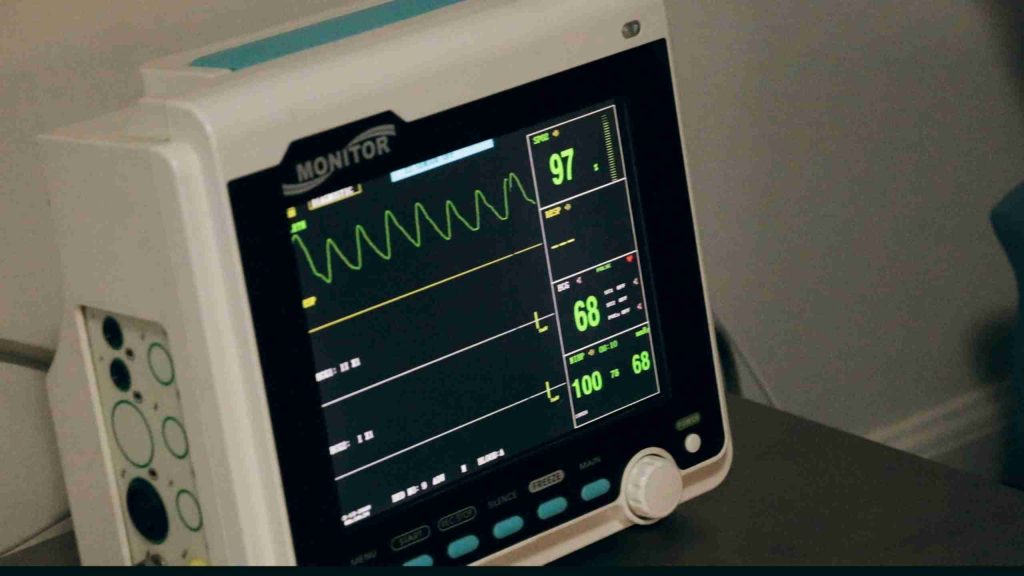Choosing a first development board can be daunting with so many choices. Here are some examples to give you an idea of what you could consider for your first board. And as always, if you have a question – reach out to hello@dojofive.com. There is a community here to help you out.
Lots of options in the development board arena
This previous blog covered a number of factors to consider when choosing a first development board. Here are some examples and why they may or may not be a good fit for you:.

This is the Adafruit Circuit Python Express. It has a lot going for it. The price is reasonable, the development tools are free, it only requires a USB cable to power and program, and it is popular, which means there’s a lot of support behind it. It contains a number of sensors (temperature, light, sound) and LEDs so there’s lots of stuff with which to experiment. It’s unique in the group here because it is designed to be programmed in the Python programming language. This board is about $25.

The Texas Instruments Tiva EK-TM4C123GXL Launch Pad is part of the Texas Instruments LaunchPad series. The LaunchPad series consists of a choice of processor board and optional adapter boards which contain various peripheral. To attach a peripheral board, simply line up the pins with the sockets and push the boards together. The board is powered over USB, which also acts as the debug interface. Code Composer Studio is the free development environment from Texas Instruments. This board is under $15.
There is also the similiar EK-TM4129XL that has an Ethernet interface for about $5 more.

The Nordic Semiconductor nRF52840DK board is designed both to run code on the nRF52840 processor, and also can function as a debug interface for other Nordic chips. The board includes 4 buttons, a USB interface, lots of GPIO for adding more hardware, Bluetooth and LEDs. For development, Segger Embedded Studio will detect and work with the board. The board costs about $55.

This is an Atmel AVR X-MEGA B1 Xplained board. This is the only board in this list that comes with an LCD display. It also has a light sensor, temperature sensor, touch sensors (QTouch). The AVR Studio development tools are free. This particular model has been discontinued, but similar boards are available, like the XMEGA-A3BU Xplained, which costs about $35.

This is the Atmel ATTiny817 Xplained board. It provides ample space to attach additional electronics. It’s a basic board with a couple LEDs, some buttons, and it costs under $10.

Some evaluation kits have very specific purposes. A microcontroller by itself is not designed to power motors directly, but they are perfectly suited to operate the power electronics required for those operations. If you need to drive motors, a board like the Texas Instruments DRV8412-C2-KIT comes with everything you need, including a power supply, the a C2000 processor daughter board, the main board equipped with the current handling electronics to drive the motors, and a couple of motors. This particular model has been replaced with a similar design, the DRV8312-C2-KIT, which will set you back about $350.

This is the ST Microelectronics STM32F103C8 processor based board known as the Blue Pill. The board features an LED, a reset switch, lots of expansion pins, and a USB port for use by your programs. This board is not from ST Microelectronics, but features one of their microcontrollers. These are very common, which helps make it an inexpensive board, costing just a few dollars. Unfortunately, one of the reasons the board is so low priced is that it requires external debugging hardware. You will be unable to do much with this board alone, unless you get one pre-programmed for other development tools, like Arduino. The Arduino version simply has the Arduino bootloader pre-installed, and can be programmed using the Arduino development tools.
A word about Arduinos
Arduinos have come a long way. Originally designed to work on an ATmega microcontroller, the Arduino uses a small program (Arduino bootloader) pre-programmed into the device that allows a user to download their programs using a common serial port. This means that no additional debugging hardware (other than a serial port) is necessary, either externally or on the board. Arduinos have expanded into an entire ecosystem. The Arduino development tools run on Windows, Mac and Linux computers. Software plug-ins for the development tools are available to support other processors from other manufacturers. It’s a very popular platform and very well supported, so it makes for a good option for embedded learning. They also offer a standard connector so you can add additional hardware modules easily.

The m5stack is a nicely packaged development board based on the 32-bit ESP32 processor. It has an entire ecosystem including base units and expansion modules. Most of the modules are fully enclosed, and they attach to one another using special cables. The base module is about $10. One of the more interesting features is the web-based UIFlow development environment. Programs are developed by graphically connecting components that look like jigsaw puzzle pieces.

The Arduino Esplora board is a good example of some of the fun stuff you can put on a development board. This one was designed to be representative of a game controller. It contains a joystick and a button pad, light sensor, accelerometer, temperature sensor, microphone, and you can attach a color LCD. The Esplora was fairly expensive by Arduino standards ($65 neighborhood) and has been officially retired by Arduino, but at this writing, these can still be purchased from various suppliers.

This is the Intel based Arduino board. I have included it here as an example of a non-Atmel based Arduino board, and it’s from Intel, a household name. It has an accelerometer, Bluetooth, and two CPU cores (an Intel Curie x86 and an Argonaut RISC [ARC] processor). Unfortunately, this board is no longer in production, but it shows what is possible.

This is an Inland Arduino board based on the Atmel ATmega2560 processor. This board is based on an open source hardware design, so it available from several sources. It offers lots of digital and analog I/O for hooking up devices. This one costs about $12.
Wrapping Up
Summary – With a little bit of research, you can narrow down the field by considering cost, features, programming language, processor, manufacturer, size, etc. from the many options from which to select your first development board. This is just an overview with a few suggestions, but there are TONS of boards to choose from that are not listed here that could be a great fit if you have a specific application in mind.
And if you are looking for even more on embedded ops, we host a weekly Lunch and Learn on a variety of topics from embedded on cellular, deep learning with microcontrollers, and more! Check out our current list of events and sign up for your seats – always no cost!





